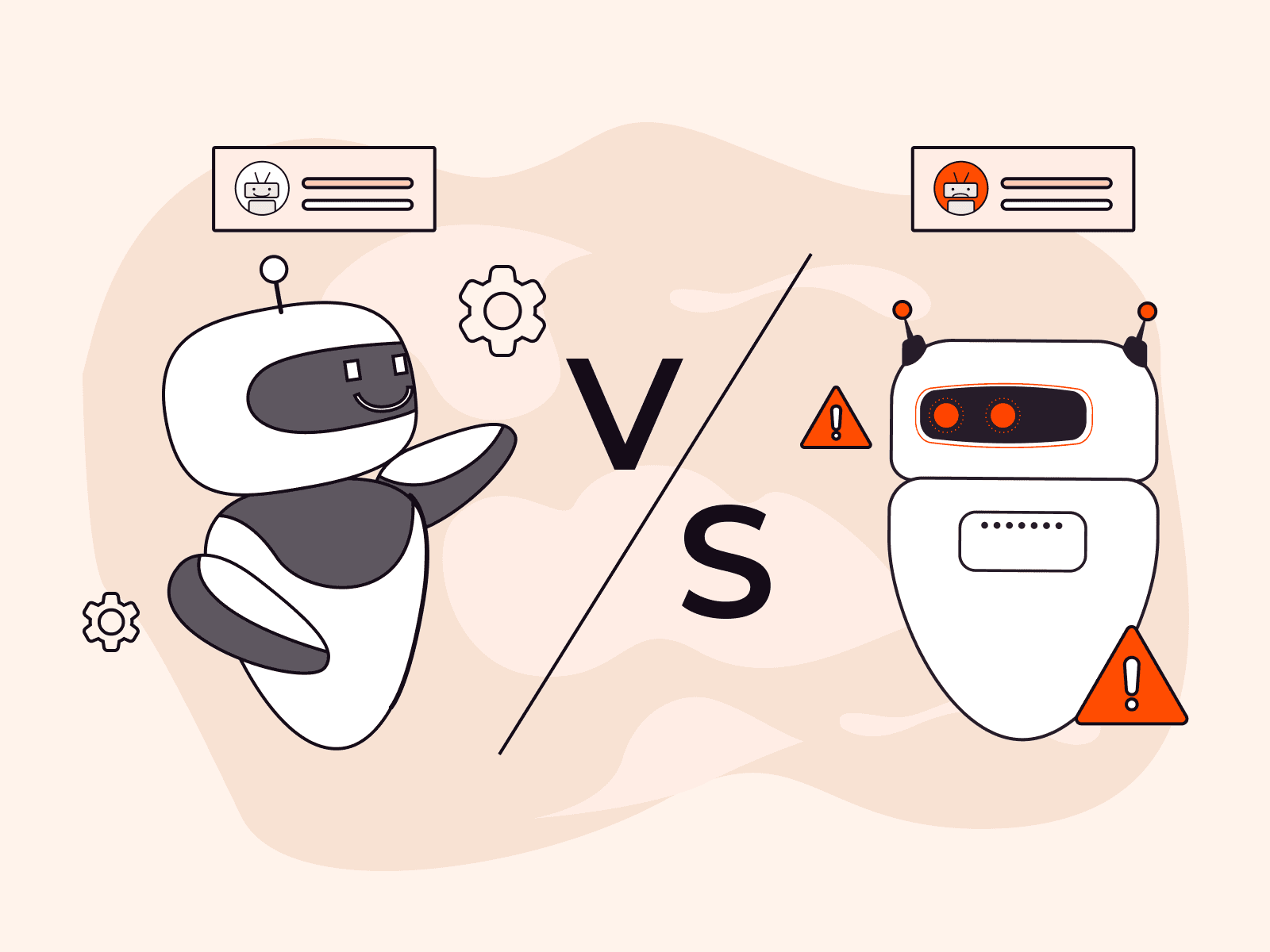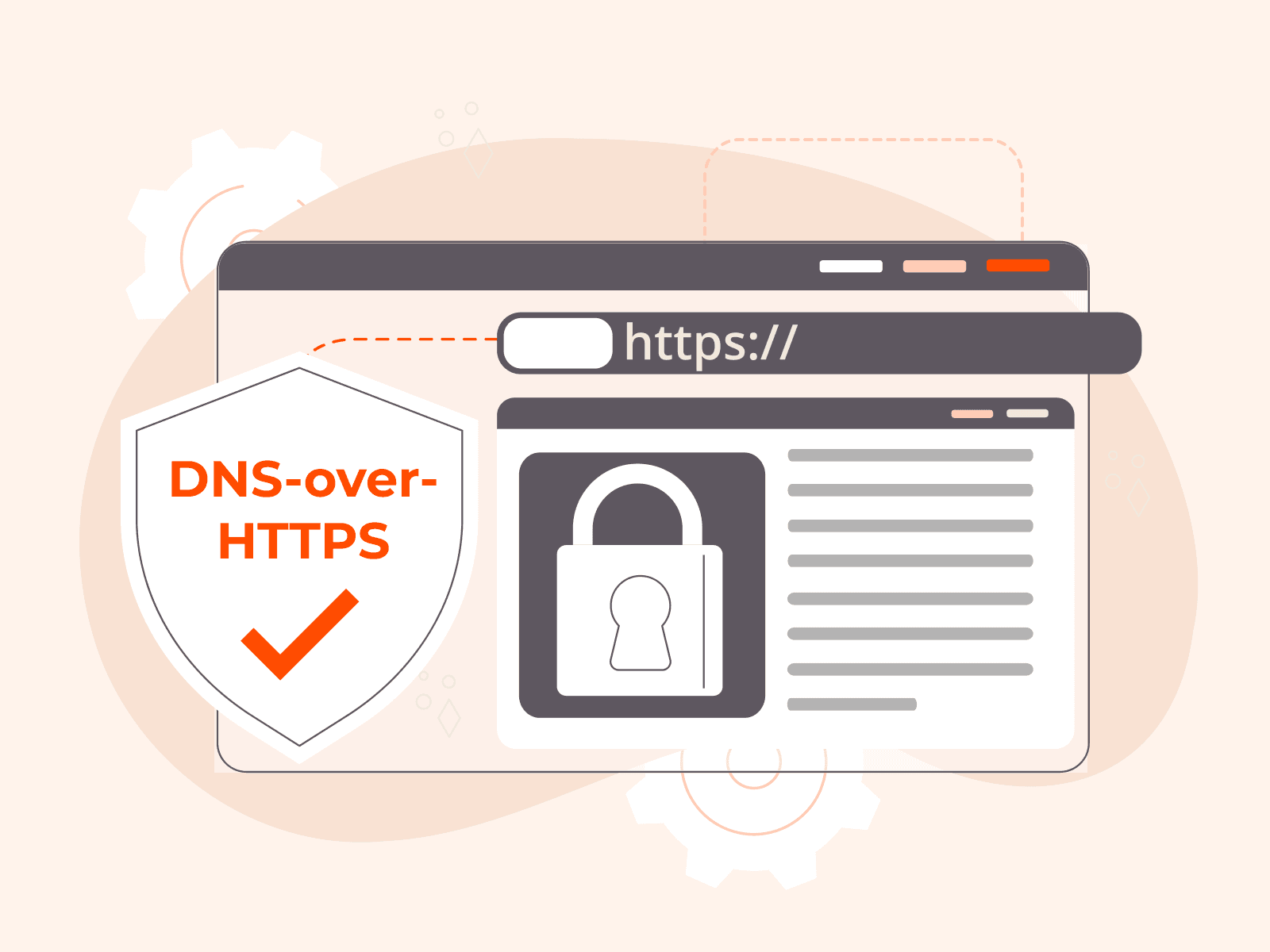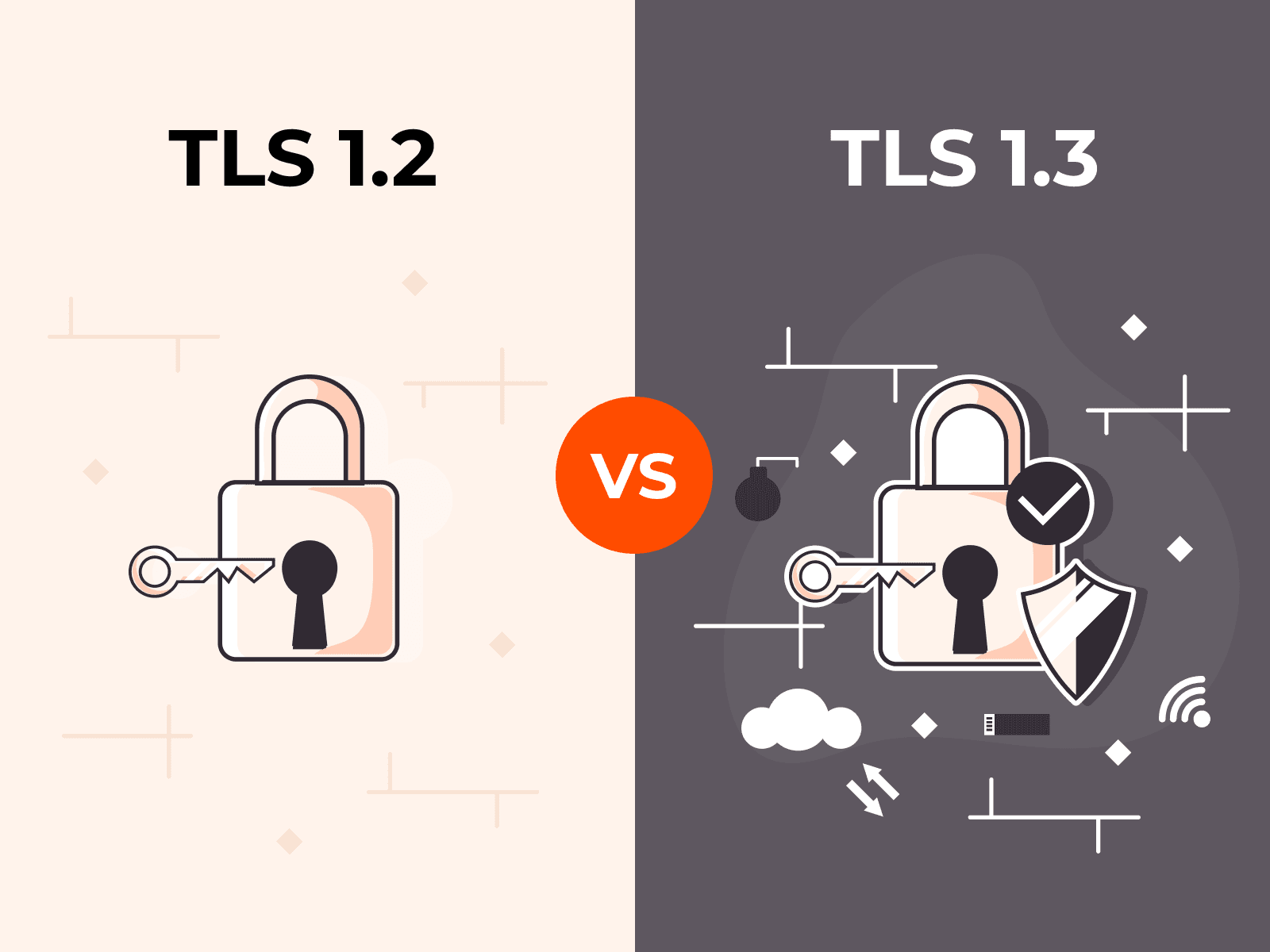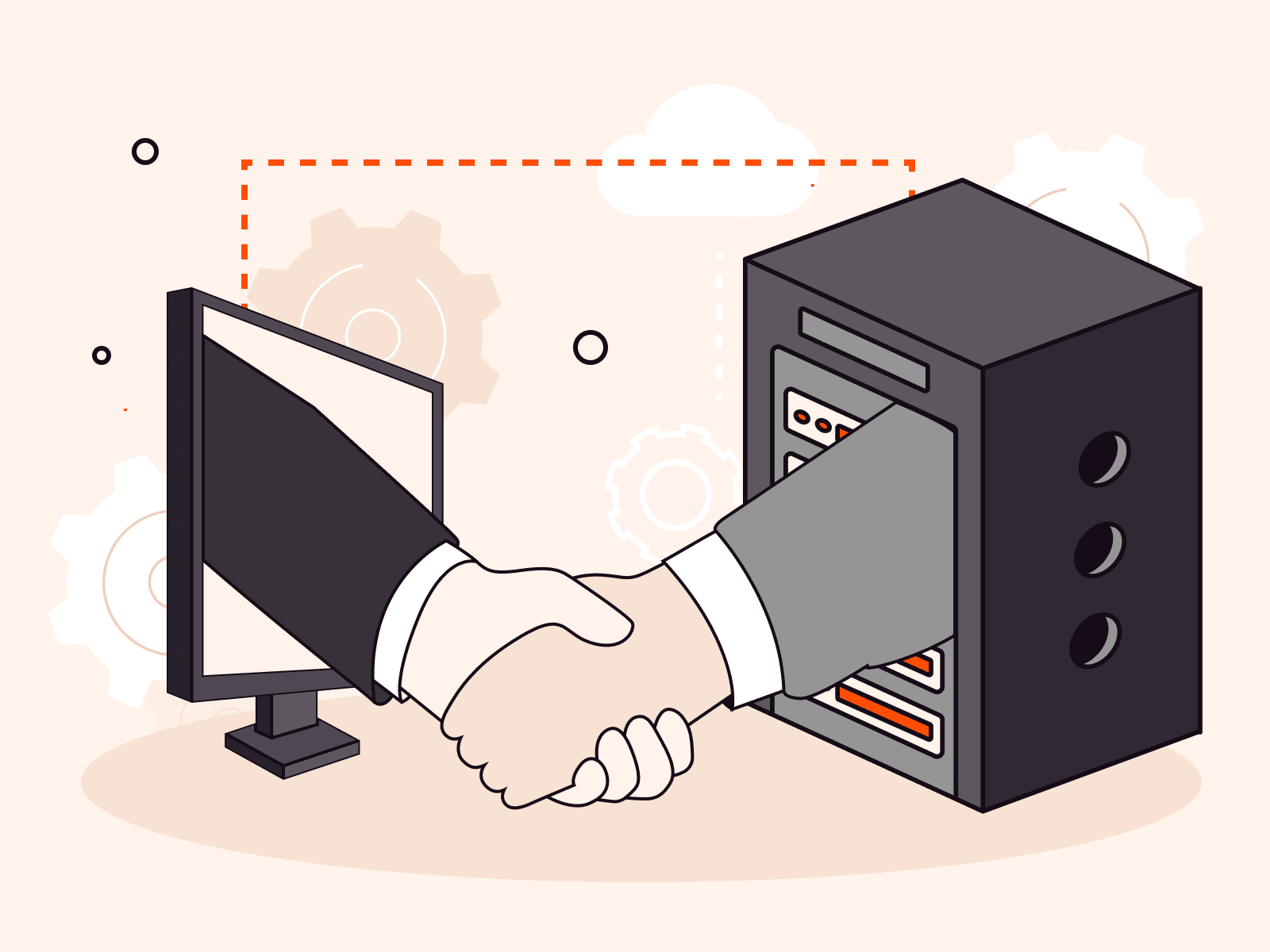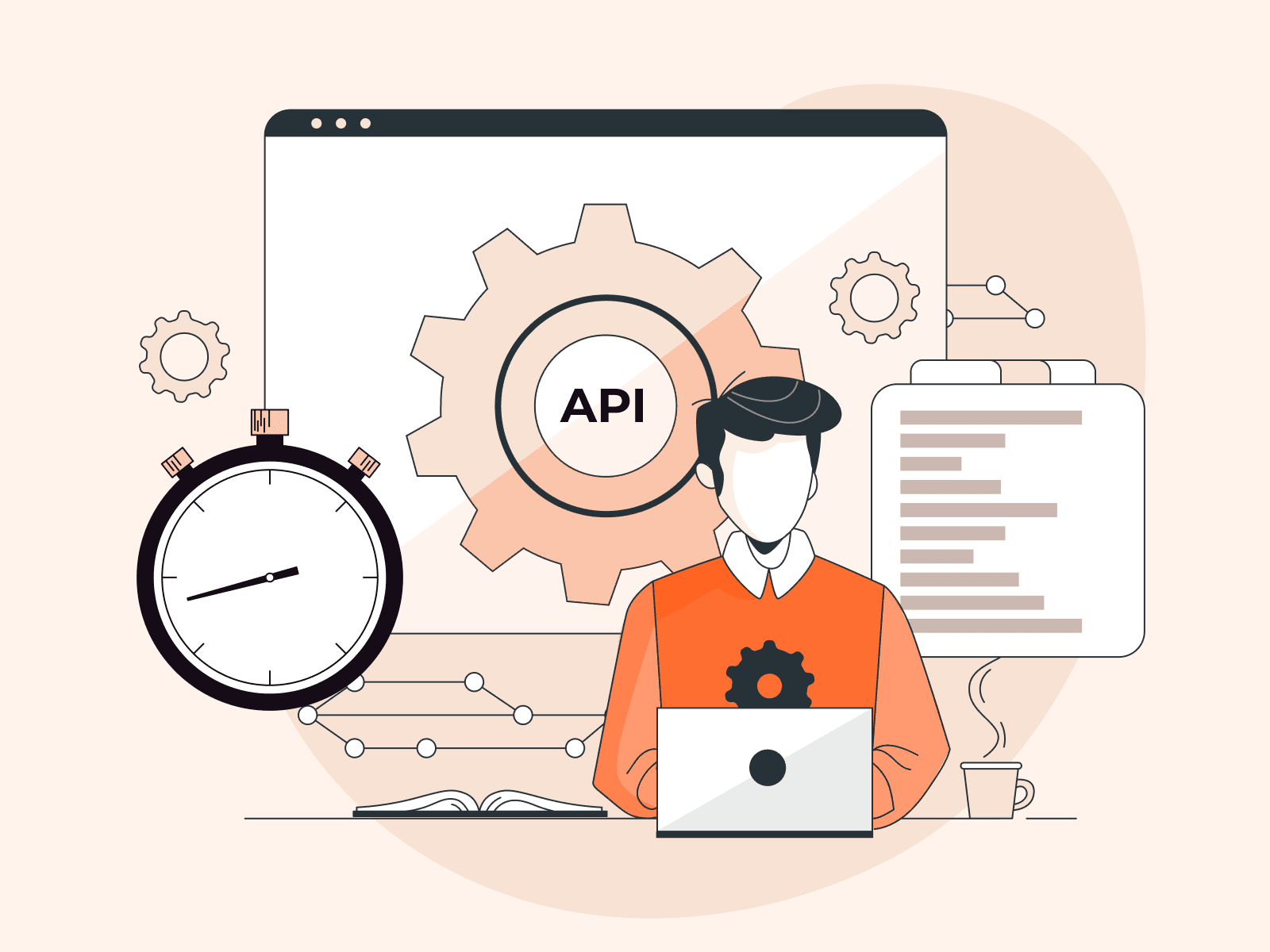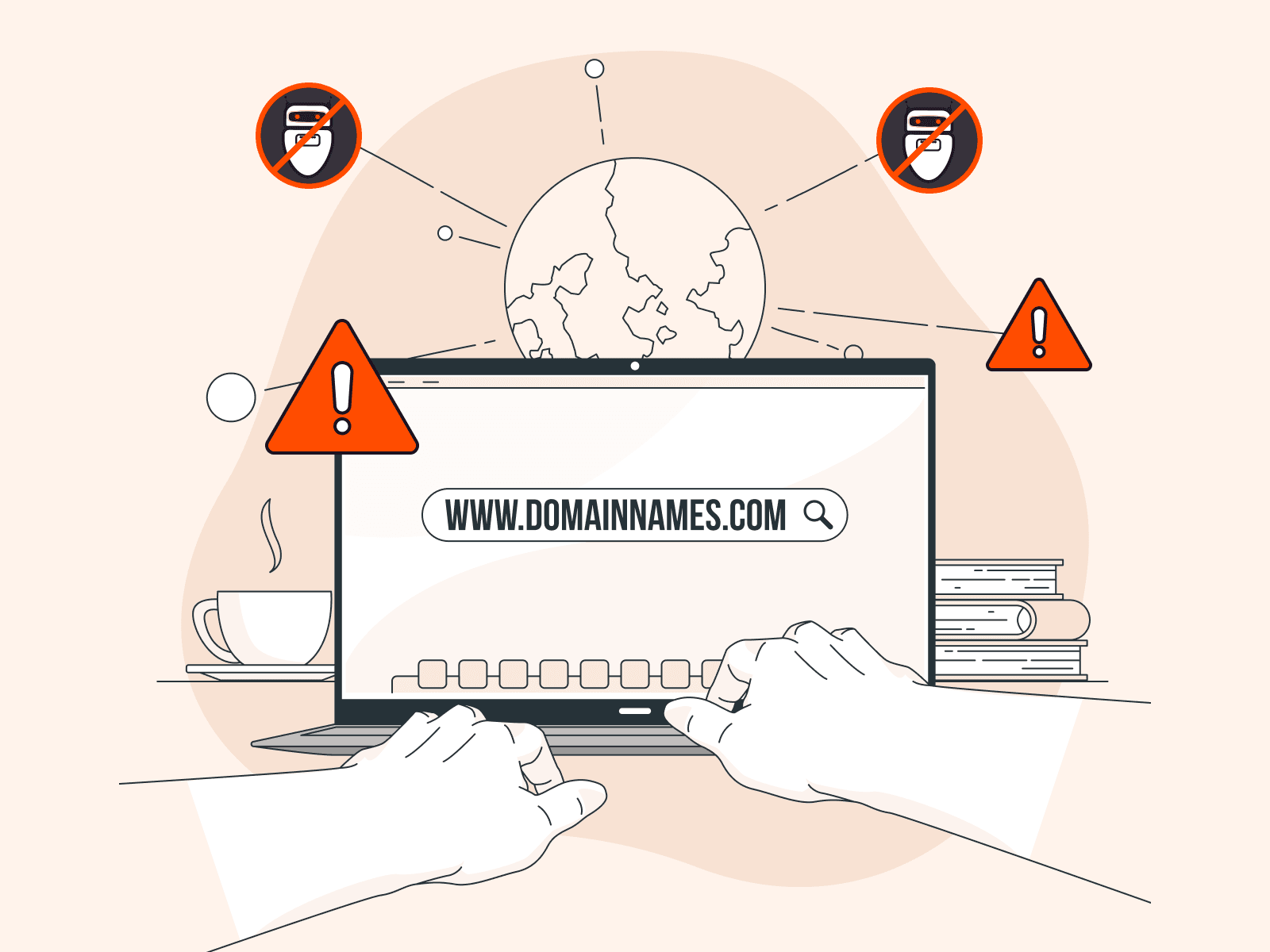Good bots vs bad bots is the distinction between automated software that helps websites and users versus programs designed to cause harm or exploit systems. Malicious bot attacks cost businesses an average of 3.6% of annual revenue.
A bot is a software application that runs automated tasks on the internet. It handles everything from simple repetitive actions to complex functions like data scraping or form filling. These programs work continuously without human intervention, performing their programmed tasks at speeds no person can match.
Good bots perform helpful tasks for companies and website visitors while following ethical guidelines and respecting website rules such as robots.txt files. Search engine crawlers like Googlebot and Bingbot index web content. Social network bots, like Facebook crawlers, gather link previews. Monitoring bots check site uptime and performance.
Bad bots work with malicious intent to exploit systems, steal data, commit fraud, disrupt services, or gain competitive advantage without permission. They often ignore robots.txt rules and mimic human behavior to evade detection, making them harder to identify and block. The OWASP Automated Threat Handbook lists 21 distinct types of bot attacks that organizations face.
Understanding the difference between good and bad bots is critical for protecting your business. Companies with $7 billion or more in revenue face estimated annual damages of $250 million or more from bad bot activity. This makes proper bot management both a technical and financial priority.
What is a bot?
A bot is a software application that runs automated tasks on the internet. It performs actions ranging from simple repetitive operations to complex functions like data scraping, form filling, and content indexing.
Bots work continuously without human intervention. They execute programmed instructions at speeds far beyond human capability. They're classified mainly as good or bad based on their intent and behavior. Good bots follow website rules and provide value. Bad bots ignore guidelines and cause harm through data theft, fraud, or service disruption.
What are good bots?
Good bots are automated software programs that perform helpful online tasks while following ethical guidelines and respecting website rules. Here are the main types of good bots:
- Search engine crawlers: These bots index web pages to make content discoverable through search engines like Google and Bing. They follow robots.txt rules and help users find relevant information online.
- Site monitoring bots: These programs check website uptime and performance by regularly testing server responses and page load times. They alert administrators to downtime or technical issues before users experience problems.
- Social media crawlers: Platforms like Facebook and LinkedIn use these bots to fetch content previews when users share links. They display accurate titles, descriptions, and images to improve the sharing experience.
- SEO and marketing bots: Tools like SEMrush and Ahrefs use bots to analyze website performance, track rankings, and audit technical issues. They help businesses improve their online visibility and fix technical problems.
- Aggregator bots: Services like Feedly and RSS readers use these bots to collect and organize content from multiple sources. They deliver fresh content to users without requiring manual checks of each website.
- Voice assistant crawlers: Digital assistants like Alexa and Siri use bots to gather information for voice search responses. They index content specifically formatted for spoken queries and conversational interactions.
- Copyright protection bots: These programs scan the web to identify unauthorized use of copyrighted content like images, videos, and text. They help content creators protect their intellectual property and enforce usage rights.
What are bad bots?
Bad bots are automated software programs designed with malicious intent to exploit systems, steal data, commit fraud, disrupt services, or gain competitive advantage without permission. Here are the most common types you'll encounter:
- Credential stuffing bots: These bots automate login attempts using stolen username and password combinations to breach user accounts. They target e-commerce sites and login pages, testing thousands of credentials per minute until they find valid account access.
- Web scraping bots: These programs extract content, pricing data, or proprietary information from websites without permission. Competitors often use them to steal product catalogs, pricing strategies, or customer reviews for their own advantage.
- DDoS attack bots: These bots flood servers with excessive traffic to overwhelm systems and cause service outages. A coordinated botnet can generate millions of requests per second, making websites unavailable to legitimate users.
- Inventory hoarding bots: These bots automatically purchase limited inventory items like concert tickets or sneakers faster than human users can complete transactions. Scalpers then resell these items at inflated prices, causing revenue loss and customer frustration.
- Click fraud bots: These programs generate fake clicks on pay-per-click advertisements to drain competitors' advertising budgets. They can also artificially inflate website traffic metrics to create misleading analytics data.
- Spam bots: These automated programs post unwanted comments, create fake accounts, or send mass messages across websites and social platforms. They spread malicious links, phishing attempts, or promotional content that violates platform rules.
- Vulnerability scanning bots: These bots probe websites and networks to identify security weaknesses that attackers can exploit. They ignore robots.txt rules and mimic human behavior patterns to avoid detection while mapping system vulnerabilities.
What are the main differences between good bots and bad bots?
The main differences between good bots and bad bots refer to their intent, behavior, and impact on websites and online systems. Here's what sets them apart:
- Intent and purpose: Good bots handle helpful tasks like indexing web pages for search engines, monitoring site uptime, or providing customer support through chatbots. Bad bots are built with malicious intent. They exploit systems, steal data, commit fraud, or disrupt services.
- Rule compliance: Good bots follow website rules and respect robots.txt files, which tell them which pages they can or can't access. Bad bots ignore these rules. They often try to access restricted areas of websites to extract sensitive information or find vulnerabilities.
- Behavior patterns: Good bots work transparently with identifiable user agents and predictable access patterns that make them easy to recognize. Bad bots mimic human behavior and use evasion techniques to avoid detection, making them harder to identify and block.
- Value creation: Good bots provide value to website owners and visitors by improving search visibility, enabling content aggregation, and supporting essential internet functions. Bad bots cause harm through credential stuffing attacks, data scraping, account takeovers, and DDoS attacks that overload servers.
- Economic impact: Good bots help businesses drive organic traffic, monitor performance, and improve customer service efficiency. Bad bots cost businesses money. Companies experience an average annual revenue loss of 3.6% due to malicious bot attacks.
- Target selection: Good bots crawl websites systematically to gather publicly available information for legitimate purposes like search indexing or price comparison. Bad bots specifically target e-commerce sites, login pages, and payment systems to breach accounts, steal personal data, and commit fraud.
What are the types of bad bot attacks?
The types of bad bot attacks listed below refer to the different methods malicious bots use to exploit systems, steal data, commit fraud, or disrupt services:
- Credential stuffing: Bots automate login attempts using stolen username and password combinations from previous data breaches. They target e-commerce sites, banking platforms, and any service with user accounts.
- Web scraping: Bots extract large amounts of content, pricing data, or product information from websites without permission. Competitors often use this attack to copy content or undercut prices.
- DDoS attacks: Bots flood servers with massive traffic to overwhelm systems and crash websites, causing downtime and revenue loss.
- Account takeover: Bots breach user accounts by testing stolen credentials or exploiting weak passwords. Once inside, they make fraudulent purchases or steal personal information.
- Inventory hoarding: Bots add products to shopping carts faster than humans can, preventing legitimate purchases. Scalpers use them to resell limited items at inflated prices.
- Payment fraud: Bots test stolen credit card numbers by making small transactions to identify active cards. Merchants face chargebacks and account suspensions as a result.
- Click fraud: Bots generate fake ad clicks to drain competitors' budgets or inflate publisher revenue, costing the digital advertising industry billions annually.
- Gift card cracking: Bots systematically test gift card number combinations to find active cards and drain their balances. This attack mimics legitimate behavior, making detection difficult.
How can you detect bot traffic?
You detect bot traffic by analyzing patterns in visitor behavior, request characteristics, and technical signatures that automated programs leave behind. Most detection methods combine multiple signals to identify bots accurately, since sophisticated bots try to mimic human behavior.
Start by examining traffic patterns. Bots often access pages at inhuman speeds, click through dozens of pages per second, or submit forms instantly. They also visit at unusual times or generate sudden spikes from similar IP addresses.
Check technical signatures in HTTP requests. Bots frequently use outdated or suspicious user agents, lack JavaScript execution, or disable cookies. They might also have missing headers that browsers usually send. Good bots identify themselves clearly; bad bots forge or rotate identifiers.
Monitor interaction patterns. Bots typically fail CAPTCHA challenges, show repetitive clicks, and follow linear navigation paths unlike real users. Behavioral analysis tools track mouse movements, scrolling, and typing speed to flag automation.
Modern detection systems use machine learning to analyze hundreds of signals, such as session duration, scroll depth, or keystroke dynamics, to distinguish legitimate from automated traffic with high accuracy.
How to protect your website from bad bots
You protect your website from bad bots by implementing a layered defense strategy that combines traffic monitoring, behavior analysis, and access controls.
- Deploy a web application firewall (WAF) that identifies and blocks known bot signatures based on IP, user agent, and behavior patterns.
- Implement CAPTCHA challenges on login, checkout, and registration pages to distinguish humans from bots.
- Analyze server logs for abnormal traffic patterns such as repeated requests or activity spikes from similar IP ranges.
- Set up rate limiting rules to restrict how many requests a single IP can make per minute. Adjust thresholds based on your normal user behavior.
- Monitor and enforce robots.txt to guide good bots and identify those that ignore these rules.
- Use bot management software that analyzes behavior signals like mouse movement or navigation flow to detect evasion.
- Maintain updated blocklists and subscribe to threat intelligence feeds that report new malicious bot networks.
What are the best bot management solutions?
The best bot management solutions are software platforms and services that detect, analyze, and mitigate automated bot traffic to protect websites and applications from malicious activity. The best bot management solutions are listed below:
- Behavioral analysis tools: Track mouse movements, keystrokes, and navigation to distinguish humans from bots. Advanced systems detect even those that mimic human activity.
- CAPTCHA systems: Challenge-response tests that verify human users, including invisible CAPTCHAs that analyze behavior without user input.
- Rate limiting controls: Restrict request frequency per IP or session to stop brute-force and scraping attacks.
- Device fingerprinting: Identify unique devices across sessions using browser and system attributes, even with rotating IPs.
- Machine learning detection: Use adaptive models that learn new attack patterns and evolve automatically to improve accuracy.
- Web application firewalls: Filter and block malicious HTTP traffic, protecting against both bot-based and application-layer attacks.
Frequently asked questions
How can you tell if a bot is good or bad?
You can tell if a bot is good or bad by checking its intent and behavior. Good bots follow website rules like robots.txt, provide value through tasks like search indexing or customer support, and identify themselves clearly. Bad bots ignore these rules, mimic human behavior to evade detection, and work with malicious intent to steal data, commit fraud, or disrupt services.
Do good bots ever cause problems for websites?
Yes, good bots can cause problems when they crawl too aggressively. They consume excessive bandwidth and server resources, slowing performance for real users. Rate limiting and robots.txt configurations help manage legitimate bot traffic.
What happens if you block good bots accidentally?
Blocking legitimate bots can harm your SEO, break integrations, or stop monitoring services. Check your logs, identify the bot, and whitelist verified IPs or user agents before restoring access.
Can bad bots bypass CAPTCHA verification?
Yes, advanced bad bots can bypass CAPTCHA verification using solving services, machine learning, or human-assisted methods. Some services solve 1,000 CAPTCHAs for as little as $1.
How much internet traffic is from bad bots?
Bad bot traffic accounts for approximately 30% of all internet traffic, meaning nearly one in three web requests comes from malicious automated programs.
What is the difference between bot management and WAF?
Bot management detects and controls automated traffic, both good and bad. A WAF filters malicious HTTP/HTTPS requests to block web application attacks like SQL injection and XSS. Together, they provide layered protection.
Are all web scrapers considered bad bots?
No, not all web scrapers are bad bots. Search engine crawlers and monitoring tools work ethically and provide value. Scrapers become bad bots when they ignore rules, steal data, or overload servers to gain unfair advantage.
Related articles
Subscribe to our newsletter
Get the latest industry trends, exclusive insights, and Gcore updates delivered straight to your inbox.
